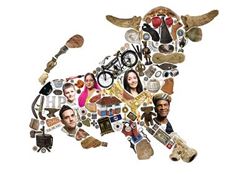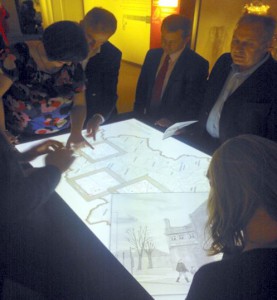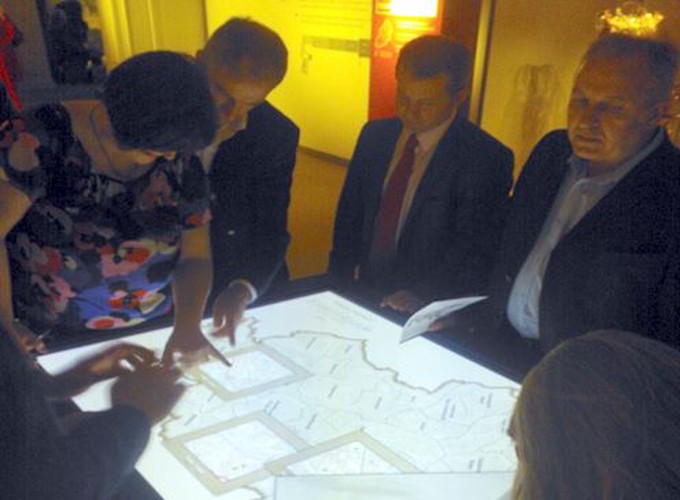Introduction
In October 2012, Birmingham Museum and Art Galleries, launched their £8.9 million

The entire gallery spans over 500 years of Birmingham history from medieval times and the industrial revolution, through to the World Wars – to the technology-led life of the 21st century. The giant collaborative touch table was installed at the most modern end of the gallery covering ‘post 1940s’.
65″ Multi-touch Table
The touch table is surrounded by museum artefacts from 1940s onwards including those relating to Aston Villa and Birmingham City football clubs, giant letterings from the HP Sauce factory, and flags from the original Bull Ring shopping centre.
The touch table expands on this idea allowing physical objects from the gallery (that are typically presented behind glass) to be examined virtually. In addition, it enables the general public to interact with a much wider range artefacts (from across the whole of Birmingham) than would normally be possible in the physical space available.
When visitors arrive at the table, they are presented with a large map of Birmingham. The map has been rotated 45 degrees to maximise the space available on the table. Layered on top of this modern map are three picture-frames (or “lenses”) that allow the user to look through the modern map into a different era. These picture-frames can be dragged around allowing the user to explore Birmingham. This enables users to compare the differences between maps and also to find artefacts related to a particular area. As the table supports up to 32 simultaneous touch points, it enables numerous people to use the lenses at the same time. Artefacts are initially represented as pins (i.e. buttons) on the map which when tapped by users open an image of the artefact along with a corresponding description. These images can be moved, re-sized, and arranged in collaboration with other users.

The application currently supports three different picture-frames each of which focuses on a different category of museum artefacts. The most popular of these picture-frames is dedicated to work by father and son artists Frank and Arthur Lockwood. They both painted numerous pictures of Birmingham and the Black Country throughout the decades and their work has a great deal of relevance to Birmingham locals and tourists to the gallery. Arthur had a particular focus on industry in the city since he returned to Birmingham in 1987. His work illustrates the dramatic change that Birmingham has gone through over many regeneration programmes.
These paintings have been scanned at a fantastically high resolution and allow the user to experience them in an entirely new way to previous Arthur Lockwood exhibitions (e.g. by allowing users to zoom right into areas of their choice). The paintings present a catalyst for conversations between all varieties of people discussing the vast differences between Birmingham new and old.
Application Development
The technology behind the touch screen is a custom 65″ touch bezel produced by PQ Labs. Their technology allows any screen to be upgraded with multi-touch functionality.
The software runs on Windows OS and is built on top of Microsoft’s Surface SDK which was originally designed for their Surface Touch Tables (they were later renamed PixelSense).
The content is ideal for a touch table – both maps and photos are very successful objects to display on tables – as they are very easy to manipulate and the user is naturally looking down. It is also natural to ‘put yourself in the data’, the first step that any museum visitor takes is to search for objects close to their home.
The lenses idea came from early tests to layer aligned information. In addition to maps, it can also be used for other overlaid ideas – e.g. looking ‘through’ a body to see the internals via x-ray images.
One tip learnt from building collaborative experiences as wallFour is that it is key to consider the number of interactive points and how this related to the number of players / users. The 3 frames with different abilities, in addition to the pop-up artefacts ensures that this application scales comfortably as the number of users increase.
Since it’s launch the application has been updated in response to its use and has had further content added.
